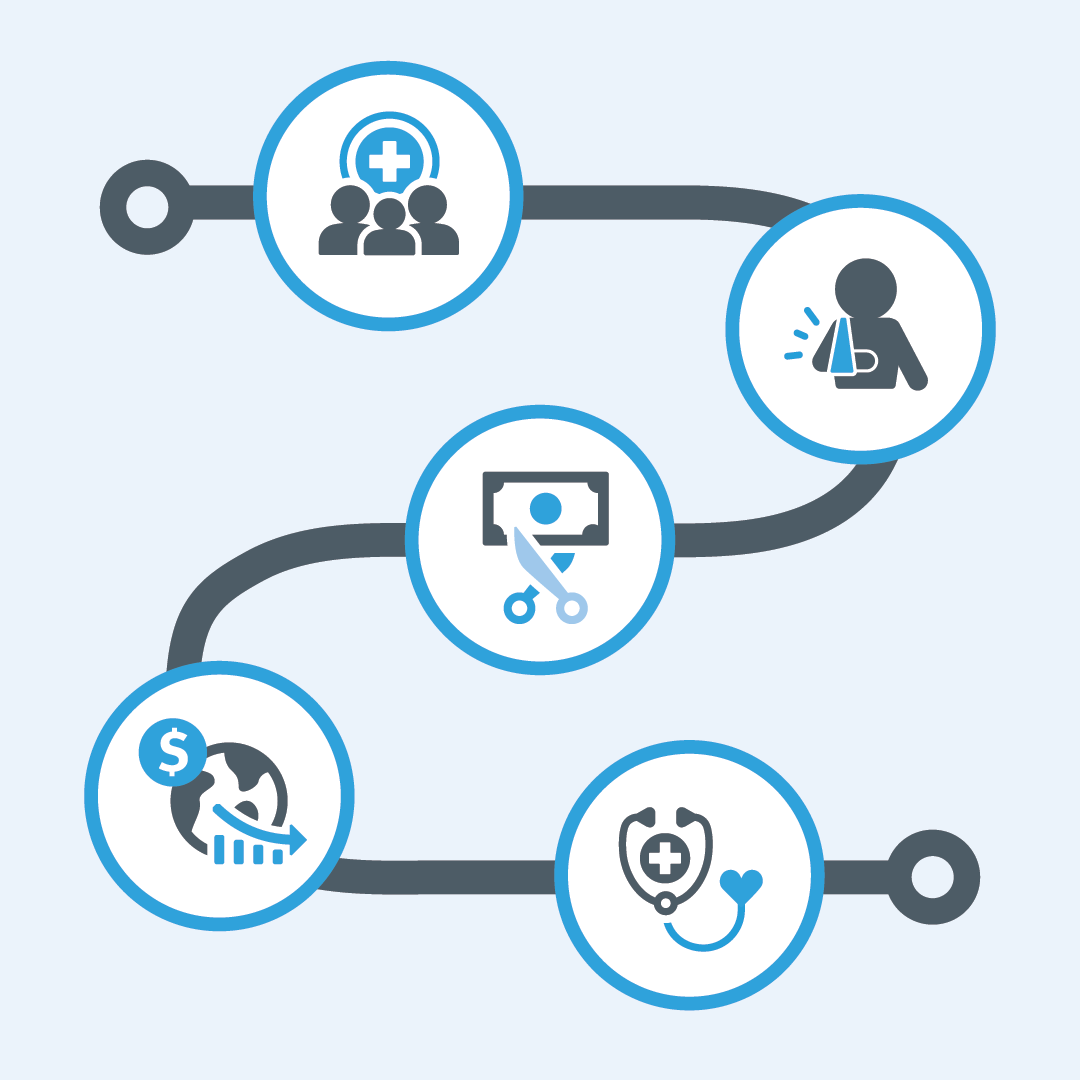
New Push for Health Coverage for the Justice-Involved Population
05.17.2016
The Obama administration recently took steps to help people leaving prison or jail get health coverage more easily. Last month, the Centers for Medicare and Medicaid Services (CMS) released a long-awaited clarification regarding health coverage for people involved with the criminal justice system. Through this guidance, CMS seeks to expand health coverage options for those who’ve recently been released from incarceration.
CMS sent a “Dear State Health Official” letter regarding Medicaid policies and a set of FAQs regarding coverage through federally facilitated marketplaces (including state partnership marketplaces) and state-based marketplaces that use HealthCare.gov. This blog outlines several highlights from both documents.
More consistent eligibility policies for Medicaid and the Affordable Care Act marketplace
There are limitations on what type of health coverage an incarcerated person is eligible to enroll in. However, what exactly constitutes “incarceration” hasn’t always been clear. We are happy to see that these two CMS documents clarify this definition and establish consistent eligibility policies for Medicaid and marketplace coverage.
In the past, there have been questions about eligibility for people living in halfway houses:
- For marketplace coverage, CMS has clarified that someone living in a halfway house is not considered incarcerated as long as “no county, city, state, or federal government is required to pay for the individual’s medical care.”
- An individual may be eligible for Medicaid if he or she lives in a halfway house as long as the person has “freedom of movement” and can still “seek health care treatment in the broader community.”
And it is now made very clear that those on probation and parole—an estimated 4.7 million people nationwide—may be eligible for Medicaid and marketplace coverage (as long as they are otherwise eligible).
Specific guidance for incarcerated people already enrolled in health coverage
There are some important distinctions, however, related to inmates who enter incarceration while already enrolled in Medicaid and marketplace coverage.
- Medicaid coverage: People who enter incarceration while enrolled in Medicaid can maintain their eligibility during their incarceration. Medicaid generally will not reimburse the correctional facility for medical services provided to inmates during their incarceration, but states have the option to allow Medicaid to reimburse providers covered inpatient services.
- Marketplace coverage: People entering incarceration who are enrolled in marketplace coverage cannot maintain their eligibility during their incarceration. They must report this life change to the marketplace within 30 days and terminate their coverage. Once released, they qualify to enroll through a special enrollment period (SEP).
CMS continues to encourage states to suspend Medicaid for those entering incarceration
As we have written before, there are a number of advantages for states that adopt policies that suspend—rather than terminate—people’s Medicaid coverage when they are incarcerated. Most notably, these policies help people during their reentry process and can ensure that they gain quick access to care upon their release. In addition, suspension policies save states the administrative burden of processing an entirely new Medicaid application for someone being released from incarceration.
In its letter, CMS reiterated that enhanced federal funding is available to states to create eligibility systems that implement these suspension policies. Some states have had difficulty establishing systems to implement suspension policies, and we hope states use this funding to build effective systems. For example, Colorado adopted suspension policies in 2008, but it has not been able to fully implement those changes.
As we have learned in our conversations with other state partners, adopting a suspension policy is just the first step. Successful implementation—which requires many systems to communicate with one another—is the second, perhaps more difficult, step. The state of Washington is the most recent state to adopt suspension policies, but the policies will not go into effect until July 2017, in part because of the recognition that it will take time to build this system.
State and local agencies should work together to foster enrollment
While we want all states to adopt and implement suspension policies, these policies are one part of the larger enrollment puzzle. Suspension policies affect only those who are already enrolled, and they have to be enrolled in Medicaid, not marketplace, coverage. It is important for individuals working with the criminal justice population to think of all of the coverage options for people leaving incarceration and to offer meaningful opportunities for people to enroll.
In recognition of the challenges around implementing suspension policies, CMS emphasized in their letter that they “strongly encourage correctional institutions and other state, local, or tribal agencies to take an active role in preparing inmates for release by assisting or facilitating the application process prior to release.”
There are several ways to provide such assistance, as we describe in more detail in our brief, Health Insurance for People Involved in the Justice System: Outreach and Enrollment Strategies. State Medicaid agencies can also take advantage of federal matching funds to support application and enrollment assistance for people leaving incarceration. States are required to accept Medicaid applications from inmates, so assisters should also consider partnering with correctional facilities to help inmates enroll in Medicaid.
It is important to note that individuals leaving incarceration are eligible for a special enrollment period (SEP) for marketplace coverage (this life change is considered part of the SEP for those who permanently move and gain access to new plans as a result of the move). This enrollment opportunity is available for 60 days following a person’s release from incarceration.
Previously, marketplaces were required to have systems in place beginning in January 2017 to allow those who are incarcerated to apply for this SEP in advance of the move in order to ensure that they had continuous coverage. However, last week, CMS announced a number of changes to this SEP, including a delay of this requirement. We have concerns about this delay, given that people who are reentering society have significant health care needs and should have continued access to care and services immediately upon their release.
Check out both CMS documents to learn more, and contact us at Assisters@FamiliesUSA.org with any questions or comments.




